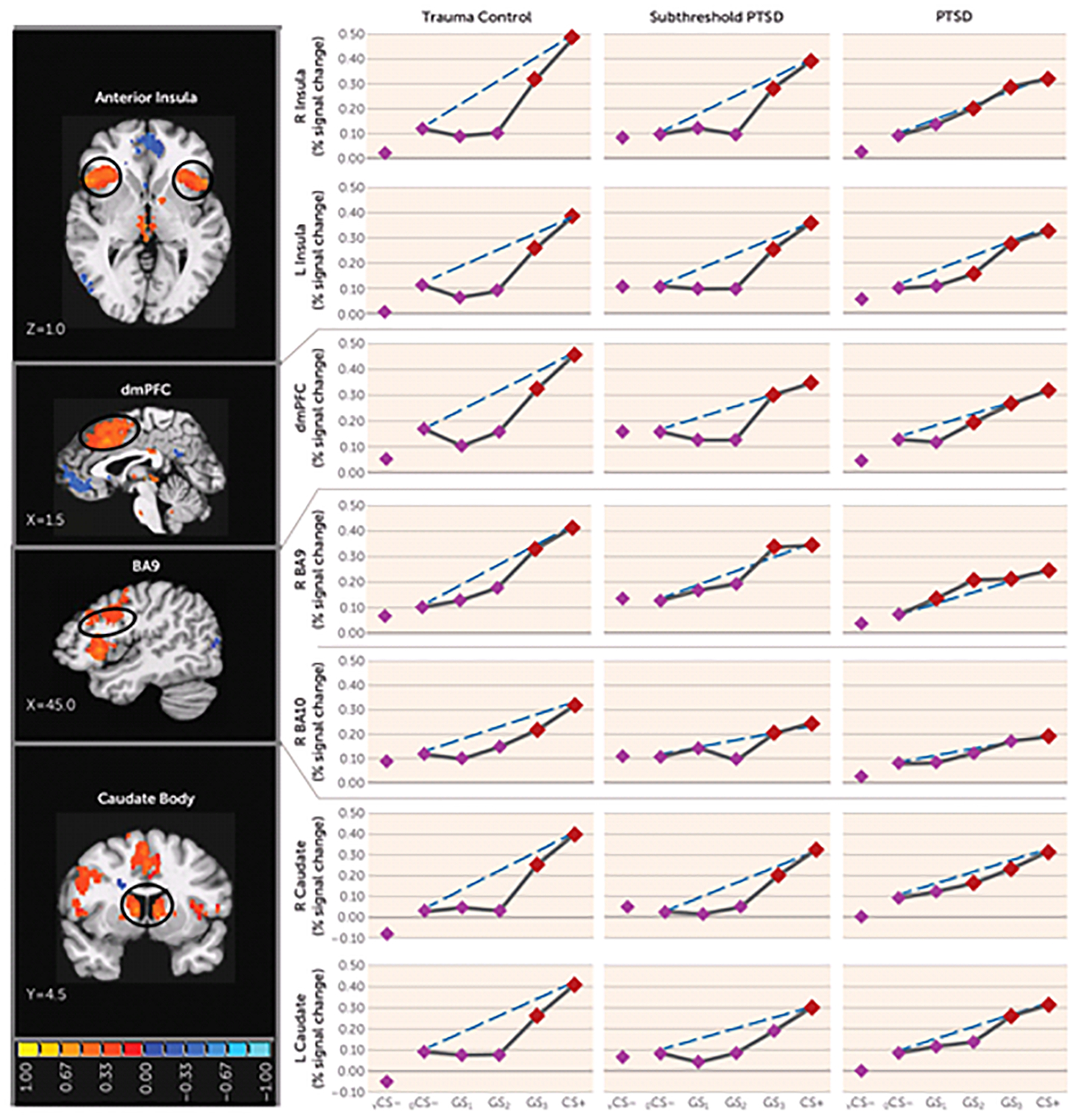FIGURE 2.

Group Differences in Positive Neural Gradients of Generalization in a Study of Neural Substrates of Overgeneralized Conditioned Feara
a Brain activations reflect functional regions of interest responding more strongly to a conditioned danger cue (CS+) compared with a V-shaped conditioned safety cue (vCS−) (orange activations) for which the shape of positive generalization gradients depended on group status. Dotted lines indicate hypothetical linear decreases in responding from CS+ to a ring-shaped conditioned safety cue (oCS−) with which to visualize the deviation of gradients from linearity in each group. Subjects with posttraumatic stress disorder (PTSD) (relative to trauma control subjects) displayed markedly less deviation from linearity (i.e., fewer quadratic declines) in all functional regions of interest, indicating a tendency toward less steep generalization gradients (or stronger generalization) in veterans with PTSD. This assertion was further tested with planned comparisons contrasting levels of reactivity to oCS− compared with CS+ and the three classes of generalization stimuli (GS3, GS2, and GS1) to identify the point on the continuum of similarity at which activations in functional regions of interest cease to generalize for each group. Red data points signify stimulus types eliciting brain responses stronger than oCS− after applying Hochberg’s adjustment for multiple comparisons at the group level for each functional region of interest. As stipulated by the Hochberg procedure (23), specific criterion p values were a function of p values generated by each set of comparisons and ranged from p≤0.0125 to p≤0.05. L=left; R=right; dmPFC=dorsomedial prefrontal cortex; BA=Brodmann’s area. Coordinates are based on the left-posterior-inferior (LPI) system.
